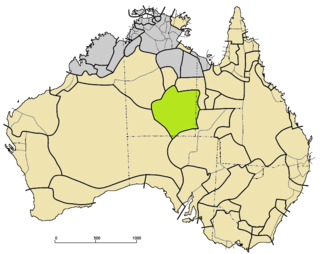The Omotic languages are a group of languages spoken in southwestern Ethiopia, in the Omo River region and southeastern Sudan in Blue Nile State. The Geʽez script is used to write some of the Omotic languages, the Latin script for some others. They are fairly agglutinative and have complex tonal systems. The languages have around 7.9 million speakers. The group is generally classified as belonging to the Afroasiatic language family, but this is disputed by some linguists.

The Papuan languages are the non-Austronesian languages spoken on the western Pacific island of New Guinea, as well as neighbouring islands in Indonesia, Solomon Islands, and East Timor. It is a strictly geographical grouping, and does not imply a genetic relationship.

The Pama–Nyungan languages are the most widespread family of Australian Aboriginal languages, containing 306 out of 400 Aboriginal languages in Australia. The name "Pama–Nyungan" is a merism: it is derived from the two end-points of the range, the Pama languages of northeast Australia and the Nyungan languages of southwest Australia.

Arawan is a family of languages spoken in western Brazil and Peru (Ucayali).
Ngan'gi, formerly known as Ngan'gityemerri, and also known as Ngan'gikurunggurr, Moil/Moyle, Tyemeri/Tyemerri, Marityemeri, and Nordaniman, is an Australian Aboriginal language spoken in the Daly River region of Australiaʼs Northern Territory. There are three mutually intelligible dialects, with the two sister dialects known as Ngen'giwumirri and Ngan'gimerri.

Mantharta is a partly extinct dialect cluster spoken in the southern Pilbara region of Western Australia. There were four varieties, which were distinct but largely mutually intelligible. The four were:
The Kurrama people, also known as the Puutu Kunti Kurrama people, are an Aboriginal Australian people from the Pilbara region of Western Australia.

The Ngayarda languages are a group of closely related languages in the Pilbara region of Western Australia. The languages classified as members of the Ngayarda languages group are :

Macro-Pama-Nyungan is an umbrella term used to refer to a proposed Indigenous Australian language family. It was coined by the Australian linguist Nicholas Evans in his 1996 book Archaeology and linguistics: Aboriginal Australia in global perspective, co-authored by Patrick McConvell. The term arose from Evans' theory suggesting that two of the largest Indigenous Australian language families share a common origin, and should therefore be classified as a singular language family under "Macro-Pama-Nyungan".
Diyari or Dieri is an Australian Aboriginal language spoken by the Diyari people in the far north of South Australia, to the east of Lake Eyre. It was studied by German Lutheran missionaries who translated Christian works into the language in the late 19th and early 20th centuries, so that it developed an extensive written form. Only a few fluent speakers of Diyari remained by the early 21st century, but a dictionary and grammar of the language was produced by linguist Peter K. Austin, and there is a project under way to teach it in schools.

The Wunambal language, also known as Northern Worrorran, Gambera or Gaambera, is a moribund Australian Aboriginal language of Western Australia. It has several dialects, including Yiiji, Gunin, Miwa, and Wilawila. It is spoken by the Wunambal people.
Yinjibarndi is a Pama–Nyungan language spoken by the Yindjibarndi people of the Pilbara region in north-western Australia.

Arandic is a family of Australian Aboriginal languages consisting of several languages or dialect clusters, including the Arrernte group, Lower Arrernte, Pertame language and Kaytetye.
Burduna is an Aboriginal language that was traditionally spoken in the region between the Ashburton and Gascyone Rivers in the Pilbara region of Western Australia. It belongs to the Kanyara group of languages, which also includes Binigura/Pinikura.

The North Halmahera (NH) languages are a family of languages spoken in the northern and eastern parts of the island of Halmahera and some neighboring islands in Indonesia. The southwestern part of the island is occupied by the unrelated South Halmahera languages, which are a subgroup of Austronesian. They may be most closely related to the languages of the Bird's Head region of West Papua, but this is not well-established.
Thalanyji and Binigura/Pinikura are two closely related languages from the Pilbara region of Western Australia. They are part of the Kanyara subgroup of the Pama–Nyungan language family.
Yinikutira, also recorded as the Jinigudira, are the traditional Aboriginal owners of the land along the Ningaloo Coast in the area of the Exmouth Peninsula in Western Australia now known as the Cape Range National Park. The area is within the Gascoyne region.
The Thalanyji, also spelt Thalandji, Dhalandji, and other variations, are an Aboriginal Australian people in the Pilbara region of Western Australia.
The Binigura people, these days usually spelt Pinikura, are an Aboriginal Australian people of the Pilbara region of Western Australia.
The Leonhard Schultze or Walio–Papi languages are a proposed family of about 6 Papuan languages spoken in the Sepik river basin of northern Papua New Guinea. They are spoken along the border region of East Sepik Province and Sandaun Province, just to the south of the Iwam languages.








